An introduction to Soil Blocking
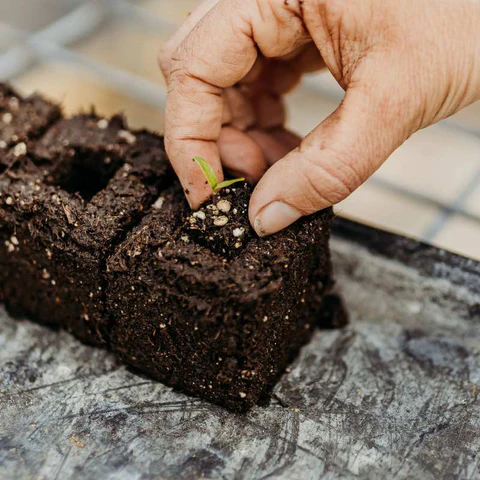
What is Soil Blocking?
Soil blocking is a method of propagating seedlings that involves creating compressed cubes of soil using a metal blocking tool. Seeds are directly planted into these blocks, which come in various sizes and are advantageous for air pruning roots. Air pruning happens as roots grow towards the drier outer layer of the block, promoting secondary root growth and a healthier, more extensive root system.
Benefits of Soil Blocking
Soil blocking is an eco-friendly and low-waste seed-starting method. It's particularly beneficial for growers with limited space, as many soil blocks can be placed on a standard 1020 tray. This method also significantly reduces the use of single-use plastics in seed starting. Soil blockers, with proper care, can last for decades.
Supplies Needed for Soil Blocking
To start soil blocking, you'll need:
- A soil blocker (mini 19mm or regular 50mm)
- Soil blocking mix or finely sifted potting mix
- Large plastic tub for mixing and holding soil
- Sifting tray for compost
- Scoop or bucket for measuring
- Water
- Trays (1020 64mm deep mesh & 1020 deep tray)
- Optional: Soil Block Drop Seeder
How to Soil Block
Fill a tub with 10-15 cm of sifted soil mix, adding water until the mix is soupy. Compress the mixture into your soil blocker, and gently release the block onto your mesh tray. Once blocks are made, insert seeds, covering lightly with soil mix if necessary. Extra water can be discarded from the bottom tray.
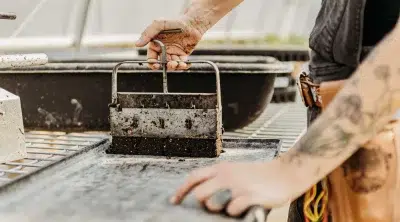
Soil Blocker
Using a Potting Mix for Soil Blocking Choose a potting mix containing peat moss, perlite, and a wetting agent. Ensure any large particles in the mix are sifted out for uniformity and structural integrity.
Whispering Willow Farm's Soil Blocking Recipe Jill Ragan of Whispering Willow Farm recommends starting with a simple soil blocking recipe, adapting it as you gain experience. Her mixture includes:
- 4 parts sifted coco-coir or peat moss
- 1 part grit like sand or vermiculite
- 3 parts sifted well-aged compost
- For every 4L of mix, add ¼ cup of dolomite lime or greensand and ¼ cup of basalt rock dust.
Compost Best Practices
Use only well-aged compost to avoid potential harm from acids or pathogens. Ensure the compost is free of large chunks and recognizable material.
Trays for Soil Blocking
The best trays for soil blocking are those that allow consistent watering without compromising block integrity. A combination of a 1020 deep mesh tray with a 1020 deep tray without holes underneath is ideal.
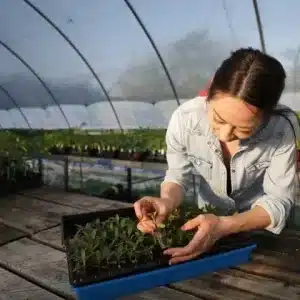
Seed Starting Trays
When to Start Seeds in a Soil Block
Follow the same guidelines as for indoor cell tray plant starts, keeping in mind your expected frost dates and space requirements. Mini soil blocks can be potted up into larger blocks or pots as needed.
Choosing Soil Block Size
Use the 19mm block for small or slow-germinating seeds, and the 50mm block for larger or quick-germinating seeds. The 19mm blocks are ideal for space-saving during germination, while the 50mm blocks suit seeds that require deeper planting.
Tips for Planting in Soil Blocks
- Plant 1 or 2 seeds per block to avoid thinning.
- Seeds should be planted at a depth no more than twice their size.
- Bottom watering prevents algae growth and allows the soil block surface to dry between waterings.
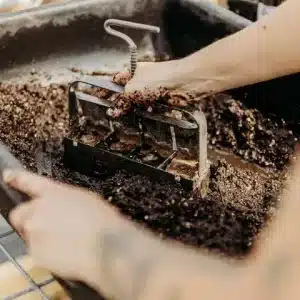
Soil Blocker
Soil Block Effects Without a Soil Blocker Air pruning trays can mimic soil block effects without the need for a soil-blocking tool.
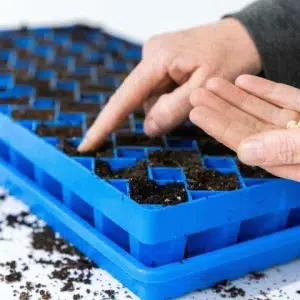
Air Prune Tray
Watering and Caring for Soil Blocks Water from below using a bottom-watering tray to prevent oversaturation and easily remove excess water.
Vegetable and Flower Varieties for Soil Blocking Choose specific vegetable and flower varieties best suited for soil blocking, considering factors like seed size and germination requirements.
Transplanting Soil Blocks Outdoors Transplant seedlings outdoors after hardening off for about a week, ensuring a smooth transition from indoor to outdoor conditions.
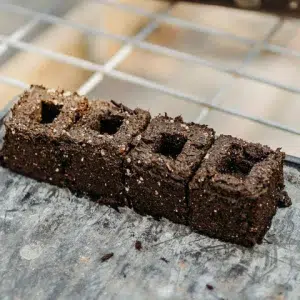
Soil Cube
Expanding on Soil Blocking
Soil blocking is a comprehensive method with several aspects that can be expanded upon, including:
Customizing Soil Block Mixes:
- Depending on the plants you're growing, the soil mix can be tailored for optimal growth. For instance, adding more perlite or vermiculite can increase drainage for plants that prefer drier conditions.
- Organic matter like worm castings can be included to enhance nutrient content.
Microgreen Production:
- Soil blocks can be an effective way to grow microgreens. The blocks provide a dense medium that supports the rapid growth cycle of microgreens.
Integration with Permaculture Practices:
- Soil blocking aligns well with permaculture principles, such as reducing waste and maintaining a closed-loop system. Compost used in soil blocks can be sourced from on-site organic waste.
Seed Saving and Soil Blocking:
- Combining soil blocking with seed saving practices can create a highly sustainable and self-sufficient gardening system.
Pest and Disease Management:
- Soil blocks can help reduce the spread of soil-borne diseases and pests compared to traditional seedling trays, as there's less chance of cross-contamination.
Space Efficiency and Scalability:
- Soil blocking is highly space-efficient, making it ideal for small-scale urban gardens or large-scale commercial farms. It can be easily scaled up or down based on the gardener's space and needs.
Educational and Community Involvement:
- Soil blocking can be used as an educational tool in schools or community gardens, teaching principles of growth, sustainability, and ecology.
Soil Health and Fertility:
- The method encourages the use of healthy, fertile soil mixes, which can be beneficial for maintaining soil health in the garden. Regularly adding compost and organic matter to soil blocks can improve the overall quality of garden soil.
Climate and Environmental Adaptation:
- Soil blocks can be adapted to various climates by altering the soil mixture or the watering regime. This flexibility makes it suitable for a wide range of environments.
Long-term Cost Efficiency:
- While the initial investment in soil blockers and trays might be higher compared to traditional seed starting methods, the long-term savings are significant, especially with reduced need for plastic pots and trays.
Innovations and Technological Advances:
- Recent advancements in soil blocking tools and equipment have made the process more efficient and accessible, even for novice gardeners.
Aesthetic and Design Aspects:
- Soil blocks can be aesthetically pleasing, adding a neat and organized look to the gardening space, which can be especially appealing in community or educational settings.

Soil Blocking
By incorporating these various aspects, soil blocking can be a holistic and versatile approach to plant propagation, suitable for a wide range of gardening styles and objectives.

